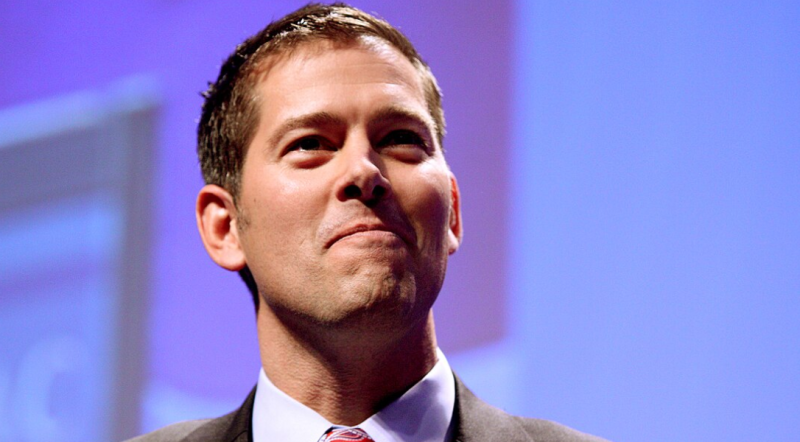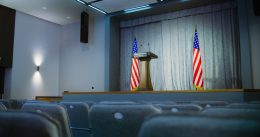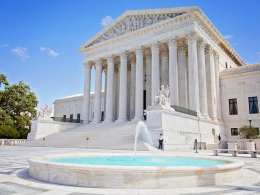Transportation Secretary Sean Duffy stunned the drone industry with a bold regulatory move that’s being hailed as a game-changer for American innovation.
The former Congressman from Wisconsin just positioned America to reclaim its leadership in aviation technology.
And Sean Duffy just opened the skies with one regulatory move that has the drone industry celebrating.
Duffy makes major moves at Transportation Department
Secretary Sean Duffy has wasted no time implementing President Trump’s pro-innovation agenda at the Department of Transportation.
Last week, Duffy submitted two critical drone regulations to the Office of Information and Regulatory Affairs (OIRA) on May 14, 2025, marking a significant step toward transforming America’s aviation landscape.
The two proposed rules deal with Beyond Visual Line of Sight Operations (BVLOS) and restricting Unmanned Aircraft System (UAS) operations at fixed site facilities, also known as the Section 2209 rule.
These regulations have been stuck in bureaucratic limbo for years under the Biden-Harris administration, which talked a big game about technology innovation but delivered nothing but regulatory paralysis.
“The BVLOS rule especially is a critical deregulatory action which will remove ill-suited regulations that artificially constrain American innovation and ingenuity,” said Lisa Ellman, Chief Executive Officer of the Commercial Drone Alliance, in a statement supporting Duffy’s move.
Ellman praised the Trump administration’s decisive action, calling the BVLOS rule “a critical deregulatory action which will remove ill-suited regulations that artificially constrain American innovation and ingenuity.”
Industry experts recognize these regulations as essential for allowing commercial drone operations to scale up across the country, enabling new applications from package deliveries to critical infrastructure inspections.
The regulations will unlock American innovation
The Biden-Harris administration had these same regulatory proposals sitting on their desks for years but failed to act. Their hesitation and bureaucratic foot-dragging gave China and other global competitors a significant advantage in developing drone technology.
Now, the Trump administration is moving quickly to rectify the situation.
“A national BVLOS framework will enable safe, scalable commercial drone operations, while a Section 2209 rule will protect sensitive infrastructure without stalling industry growth,” explained Michael Robbins, Chief Executive Officer of the Association for Uncrewed Vehicle Systems International.
The implications of these regulations extend far beyond just flying small packages to your doorstep.
Suzanne Lemieux, Director of Security and Emergency Management at the American Petroleum Institute, highlighted how the rules will lead to “safer inspections of our nation’s critical infrastructure, more efficient monitoring of emissions, and aiding response and recovery efforts, among others.”
For retailers, these regulations are a major breakthrough.
“Drone delivery will make items that people need and want quickly, from common household goods to medications, available for ultrafast delivery,” noted David French, Executive Vice President of the National Retail Federation.
Industry support for regulatory action
Major companies in the drone and aviation sectors have expressed support for advancing these regulations.
Amazon has been a key player in the push for drone delivery regulations, hosting Secretary Duffy at their Prime Air facility in Seattle earlier this year to demonstrate their technology.
Archer Aviation, which is developing electric vertical takeoff and landing (eVTOL) aircraft, has also shown enthusiasm for advances in aviation innovation. The company has been selected as the exclusive air taxi for the 2028 Olympic and Paralympic Games in Los Angeles, highlighting the growing importance of next-generation aviation technologies.
Years of regulatory delays finally addressed
While the drone industry celebrates these developments, the path to this point has been long and frustrating. The Section 2209 rule was mandated by Congress in 2016, highlighting the years of delays in implementing these regulations.
According to industry experts, the push to enable Beyond Visual Line of Sight drone operations has spanned over a decade, marked by repeated missed deadlines. In 2021, the FAA established the BVLOS Advisory Rulemaking Committee with approximately 90 industry stakeholders, which submitted its recommendations in March 2022 – but regulatory progress stalled.
The Commercial Drone Alliance has been vocal about the need for these regulations to be expedited through the review process so stakeholders can provide feedback and help finalize the rules.
With these new rules, America is taking an important step toward enhancing its leadership in aviation technology and creating new opportunities in the drone industry.
















